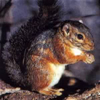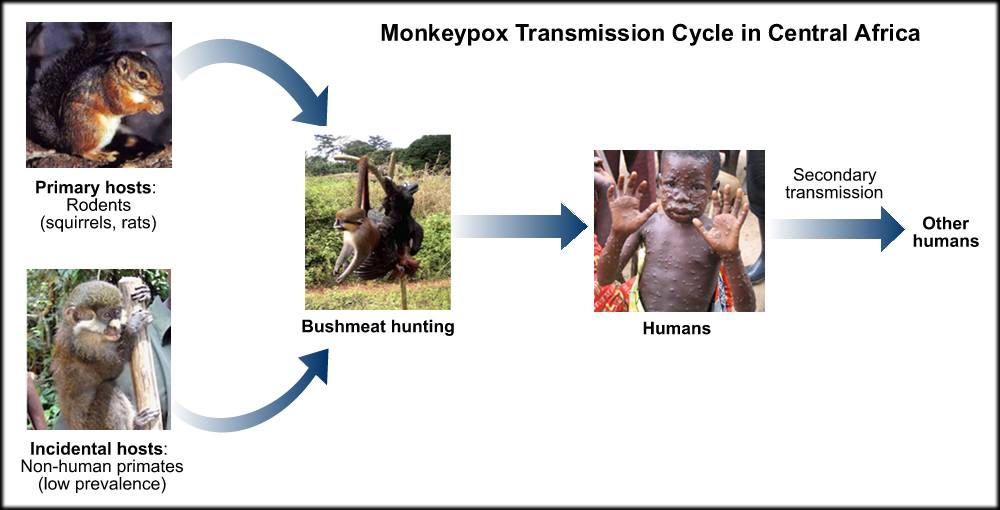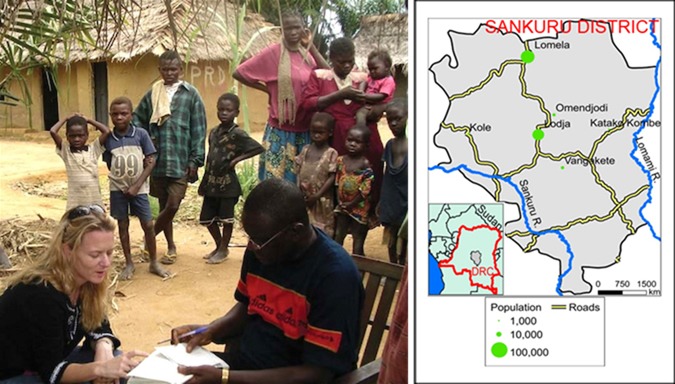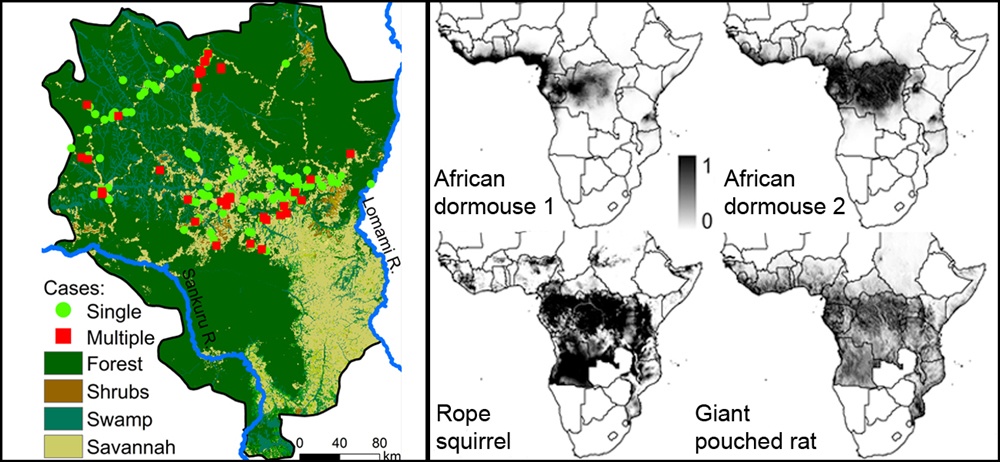
Blog |
Using Remote Sensing to Map the Principal Carrier of Monkeypox Virus in the Congo Basin
Where do new diseases come from? In the last century, three-quarters of new communicable diseases in humans originated in wildlife. For example, human immunodeficiency virus (HIV), severe acute respiratory syndrome (SARS), and avian influenza (bird flu) were all transmitted to human populations from wild animals. An important step in controlling a disease that moves from wildlife to humans is to first identify the most important animal host. Faculty and students at the Center for Tropical Research (CTR) are working to find the main animal carrier of the monkeypox virus, an emerging disease in Central Africa.
Monkeypox belongs to the same viral family as smallpox, which killed hundreds of millions of people before it was eradicated in 1980. However, the subsequent cessation of smallpox vaccination has left people vulnerable to the monkeypox virus, which causes skin lesions, blindness, and death in up to 10% of cases. The virus, which was first detected in monkeys, is primarily transmitted to people through contact with infected wild mammals. An infected person can then transmit the disease to people in their household or to people at a hospital when they seek medical care. Monkeypox is transmitted between humans through close physical contact or through contact with contaminated objects, such as a patient’s sheets.

Monkeypox is transmitted from infected animals to humans primarily through bushmeat hunting. Rope squirrels are among the most frequently consumed bushmeat species in rural areas of the Democratic Republic of Congo.
Anne Rimoin, a CTR-affiliated assistant professor in the UCLA Department of Epidemiology, studies monkeypox in the Democratic Republic of Congo in Central Africa. Dr. Rimoin and her research teams are conducting clinical surveillance and seroepidemiologic studies that will provide a better understanding of the public health significance of human monkeypox as well as essential information for the development of future ecologic studies and vaccine and therapeutic trials for prevention and control of orthopoxviruses in a community setting. Dr. Rimoin has recently shown that cases of the virus in the Democratic Republic of Congo have increased 23-fold since the 1980s. To address this potential health emergency, myself and other researchers at CTR have been collaborating with her to develop ecological models to pinpoint which animal carrier of monkeypox is the most important for sustaining the virus in the wild.

Left: Dr. Anne Rimoin at a research site in the Democratic Republic of Congo. Right: Monkeypox study region in the Sankuru District of the Democratic Republic of Congo (DRC). Inset: Location of the Sankuru District within the DRC.
A variety of animals have been suspected to be important hosts of the monkeypox virus, ranging from primates to rats to squirrels. In a paper recently published in the journal EcoHealth, entitled “Using remote sensing to map the risk of human monkeypox virus in the Congo Basin,” CTR researchers compared outbreaks of monkeypox in villages in the Democratic Republic of Congo to the ranges of animals hypothesized to be monkeypox carriers. Statistical models constructed as part of this work clearly indicated that squirrels are the most important carrier. This finding can help public health decision-makers plan future expeditions to trap and test animals for monkeypox and design policies to control the virus.

Villages in the Sankuru district with outbreaks of monkeypox. Right: Habitat models of wild mammals hypothesized to be carriers of monkeypox in Africa.
Although the monkeypox virus, at first glance, might appear to be a health issue confined to Africa, the disease has already begun to appear in the United States. In 2003, a rat imported from Ghana as part of the exotic pet trade triggered an outbreak in the Midwest in which more than 70 people were sickened. Furthermore, rats that carry monkeypox in West Africa have recently become established in the Florida Keys as invasive species. These developments underscore the importance of carrying out vigilant surveillance of wildlife to predict and prevent epidemics in humans.
Figures contributed by Trevon Fuller and photos courtesy of the Democratic Republic of Congo Ministry of Health.
